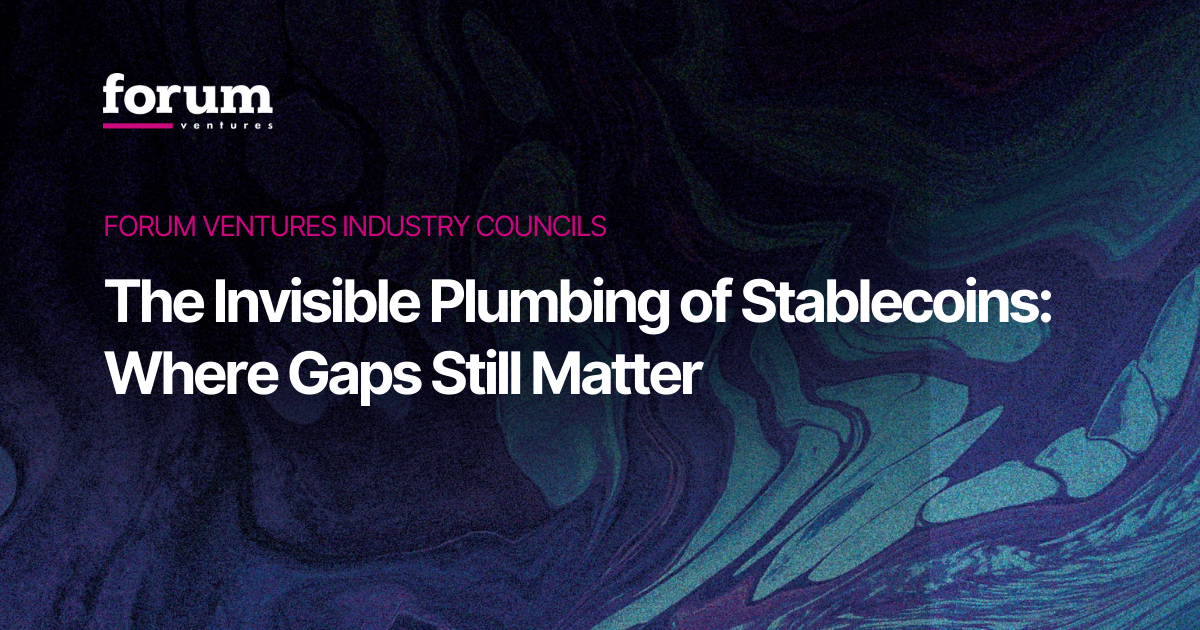Key Metrics and Pitfalls in Measuring Corporate Innovation
Measuring corporate innovation is an incredibly difficult task. It’s a delicate balance of fitting into corporate nomenclature while also ensuring there’s enough room to navigate the often imperfect process of innovation. If you don’t play the corporate game, you could lose support from stakeholders. But if you measure innovation projects only using traditional business metrics, you could stifle innovation projects and get nowhere.
In a recent Forum Ventures virtual lunch and learn, innovation and digital transformation leader Amy Radin explained how corporate innovators can walk that delicate line. An executive, board member, and advisor to multiple organizations, she’s seen innovation happen at every level and knows how the process works. In this conversation, she shared three critical things all innovators need to measure – and two pitfalls to avoid.
Critical innovation measurements
Traditional business metrics rarely apply to innovation projects, since traditional metrics are geared to measure improvement, not creation. As a result, a new understanding of metrics is necessary.
Measurement #1: Define innovation and become friends with IT
Amy defines innovation as looking for viable new offerings to solve real problems for real people.’ This definition is similar to the Forum Ventures Enterprise Innovation Playbook, which describes innovation as the process of creating something new for your organization that helps with efficiencies, threat mitigation, resilience building, or refocusing the organization on the customer.
Once you know what innovation is supposed to do for your organization, it’s a lot easier to track innovation projects. However, you need to ensure you have easy access to the data you need. This, said Amy, requires a tight relationship with IT. A lot of organizations collect data in ways that teams outside of the data team can’t reach. As a result, building a relationship with IT is a critical ‘progress metric’ in the innovation journey, because it empowers you to tell your story down the line.
Measurement #2: Measure across the whole customer relationship
One big difference between traditional efficiency projects and innovation projects is how it considers the customer relationship. In many large corporations, a traditional project will target one element of the customer journey. For example, a customer service initiative might think only of existing customers and not pay as much attention to potential customers (since that’s a marketing project).
Innovation must consider the entire customer relationship and measure how the project could impact any element of it. Amy warned that innovation teams could mischaracterize their customers if they get too narrow in what they consider.
This works in two ways from a measurement perspective:
- Relationship mapping: Throughout the project, tagging which elements of the whole customer journey might be impacted.
- Stakeholder tie-in: Tracking customer relationship impact all the way back to stakeholder needs.
Amy shared an example of when she worked at Citi. After the digital team introduced online bill payments, delinquency fees for late payments declined for the business. Some executives hypothesized that the online payments functionality was the cause of the drop in delinquency fees. Amy’s team went on a data mission to figure out how online payments affected customers and business performance, since this new feature was clearly engaging their customers online.
Working in tight partnership with Citi’s extensive Decision Management team, the digital team was able to pull customer insights across the entire customer relationship. Through this data, the team found that customers who chose to pay their bills online turned out to be Citi Cards’ most valuable customers. So while delinquency fees were going down for this population, these customers had much higher product engagement and loyalty. As a result, building a seamless digital experience was actually a very valuable project with significant growth potential – even if it impacted one line in the P&L.
Measurement #3: Behavioral change
Armed with a definition of innovation and a holistic view of how your project could impact customers, the ‘official’ metrics of innovation focus on behavioral change, Amy said. Start by asking, “What are the top customer behaviors that affect business performance?” Don’t overcomplicate the answer; don’t try at the outset to be overly detailed or precise. That can happen later as you iterate the answer through testing and experimenting.
The process starts by asking which behaviors might signal that your project is headed in the right direction. These actions could be anything from buying the product, buying it again, using it, returning it, means of payment, engaging online or in physical channels – or both, etc.
Measuring the impacts of innovations on customers’ behavioral changes can also empower you in a conservative business environment. You can conduct ultra-tiny experiments at the outset just to prove that you can affect behaviors. Your first project likely won’t affect the business as a whole because it’s so small, so you’re likely to get buy-in much more quickly. However, you gain immense learnings not only about affecting behavior change but also conducting innovation experiments: learnings that can be applied to larger projects down the line, and starting a test-and-learn cycle that will build momentum and can lead to significant impacts.
Pitfalls to avoid
Unfortunately, large corporations often have rigid ways of doing things that hinder innovation. Amy shared two pitfalls to avoid when it comes to measuring innovation in a corporate environment.
Pitfall #1: When intuition is based on baggage
It’s easy to be both really smart and really wrong, Amy cautioned. It’s critical to not let collective knowledge inside a corporation become ‘bad baggage’ that weighs you down in an innovation project. Unfortunately, intuition built up in a traditional business environment rarely fully applies to innovation projects.
This doesn’t mean that you can’t respect the culture of your business. Far from it - you have to respect culture and accumulated wisdom if you want to get anywhere as an innovation leader. But you don’t have to absorb every old way of working. Instead of starting with ‘the way the business does things,’ take a ‘clean sheet’ approach where you start with outcomes and build backwards.
Pitfall #2: Obsessing over attribution
One weird thing about innovation projects is they can blow up – or be wildly successful – due to seemingly random actions. With that in mind, forcing a rigid attribution model for employees (and for the project itself) is not a good idea.
This is one area Amy said innovation teams can really get wrong. She said that while attribution is a good goal, it becomes frustrating and makes the conversation far too internally focused. Instead of talking about the customer journey and behavioral change, teams end up squabbling over who gets credit.
Unfortunately, this can ruffle some feathers throughout the whole business, so be aware of that. Amy shared an example of an insurance business she worked with. Agents got full attribution for sales initially, but the customer journey mapping uncovered that customers had 10 touch points with the business before they got to an agent. This discovery angered a few of the agents, but opened up new perspectives on how to invest marketing dollars and think about attribution. For example, because of the role of online search in people’s research process SEO became an area of focus and investment. The company only arrived at this important insight by looking at what actually happened in the customer journey, not just last-step attribution.
Measuring the unmeasurable
In many ways, ‘innovation’ feels like an unmeasurable task. It can take so many different forms, pivot on a dime, or entirely fail because of a simple problem. As leaders, then, measurement is not about creating intense dashboards and financial forecasts. Instead, it’s about seeing where the work plugs into the organization. That starts with a clear definition of innovation, which is a metric unto itself. Then you can map your work to the entire customer journey and track behavioral change that leads toward your ultimate end goal. As long as you approach this process from a place of unlearning, new learning, and focusing on outcomes over attribution, the journey is exciting and rewarding.
About Amy Radin
Amy Radin is a highly experienced, down to earth, visionary and pragmatic innovation expert. She was Citi’s first Global Chief Innovation Officer, and also held executive marketing positions at American Express and AXA. She now works with leaders faced with the imperative to innovate, helping them pursue new sources of growth and value while reducing the inevitable risks.
Check out Amy’s latest book here: The Change Maker's Playbook: How to Seek, Seed and Scale Innovation In Any Company
--
Interested in connecting with other Innovation and technology executives to share strategies, experiences and learnings? The Innovation Forum brings together Innovation execs across sectors to connect, share and support each other. Get exclusive resources, expert talks and first access to our growing community of B2B startups. Learn more by emailing me at Jon@forumvc.com.
.avif)
.avif)



.svg)




.avif)

